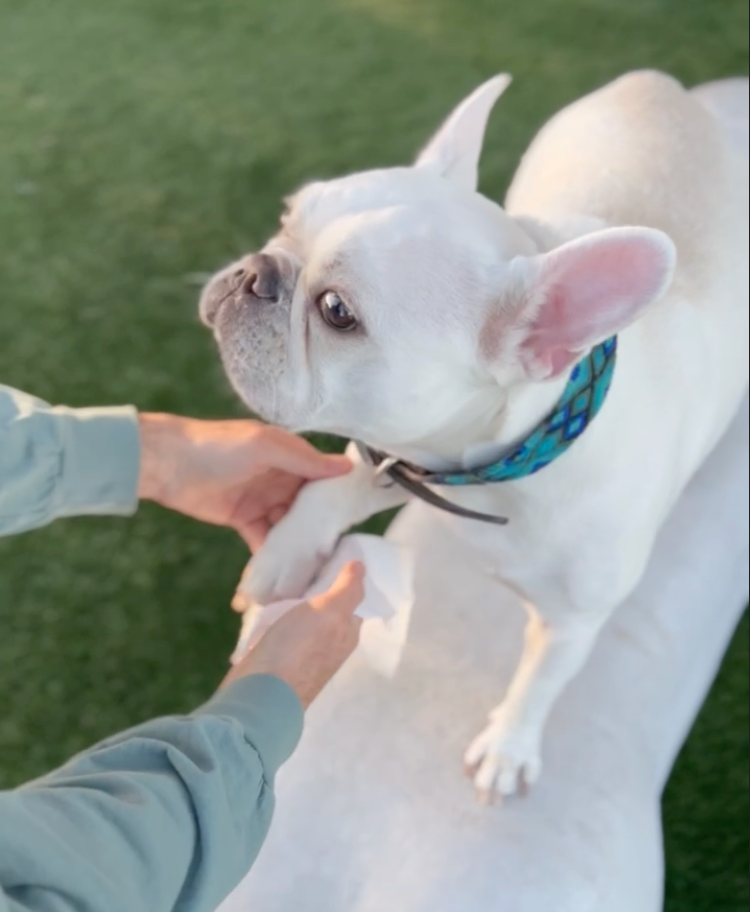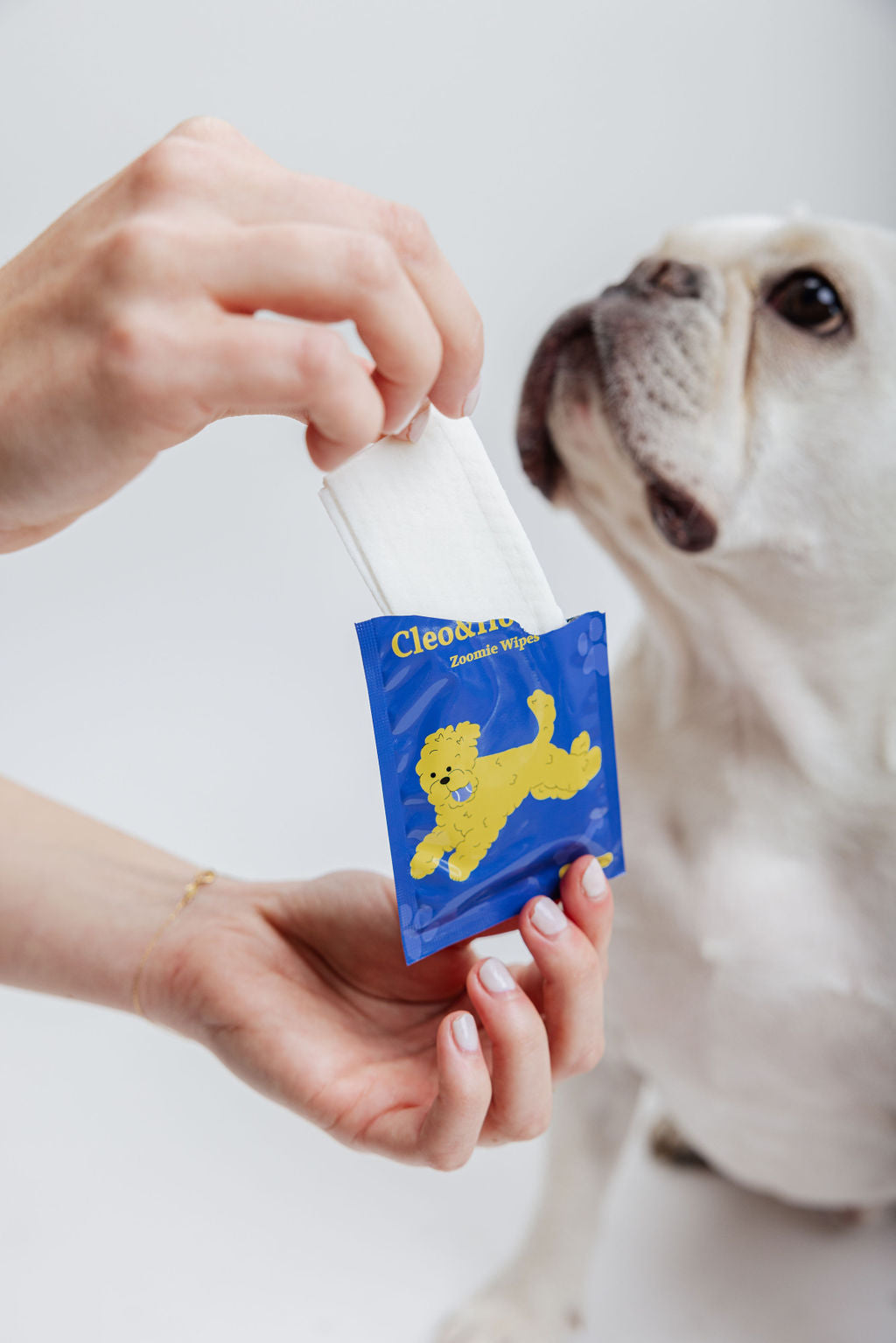DIGITAL DOG PARK
First Aid Basics Every Dog Owner Should Know
Emergencies can happen at any time, and being prepared is crucial, especially when it comes to our canine companions. In this essential guide, Cleo&Hooman provide you with the basics of canine first aid. Understanding how to handle common emergencies can make a significant difference in ensuring the safety and well-being of your furry friend. 1. Creating a Dog First Aid Kit Essential Items: Include bandages, antiseptic wipes, tweezers, scissors, a thermometer, and a blanket. Medications: Consult your vet about safe pain relievers and any specific medications your dog may need. Contact Information: Have your vet’s number and the nearest animal emergency clinic readily available. 2. Handling Common Injuries Cuts and Scrapes: Clean with antiseptic and apply a bandage. Watch for signs of infection. Sprains and Strains: Rest is crucial. Apply a cold compress if swelling is present and consult a vet if limping continues. 3. Dealing with Poisoning Recognize Symptoms: Look out for vomiting, diarrhea, drooling, or seizures. Immediate Action: If you suspect poisoning, contact your vet or a poison control center immediately. 4. Choking Hazards Identifying Choking: Signs include difficulty breathing, pawing at the mouth, or a blue tint to the lips. Intervention: If safe, look inside the mouth for any obstruction and carefully remove it if possible. If not, rush to a vet. 5. Heatstroke and Hypothermia Heatstroke: Move your dog to a cool area, apply wet towels, and provide small amounts of water. Hypothermia: Warm your dog gradually with blankets and warm (not hot) water bottles. 6. CPR for Dogs When Necessary: Use if your dog is not breathing and has no heartbeat. Procedure: Place your dog on its side, check for obstructions in the mouth, then perform chest compressions and rescue breaths. Familiarize yourself with the detailed procedure appropriate for your dog’s size. While we hope you never have to use these first aid tips, being prepared can help you stay calm and effective in an emergency. Remember, first aid is not a substitute for veterinary care, but it can be vital in stabilizing your dog and preventing further harm on the way to professional treatment. Stay safe, and give your dog an extra pat for us at Cleo&Hooman!
Learn moreRecognizing and Managing Common Canine Allergies
Just like humans, dogs can suffer from allergies, which can affect their quality of life. In this blog, we'll dive into the world of common canine allergies, helping you identify potential allergens, recognize symptoms, and explore effective management strategies. With Cleo&Hooman's insights, you'll be better equipped to help your furry friend lead a more comfortable and happy life. 1. Identifying Common Allergens in Dogs Environmental Allergens: Pollen, mold, and dust mites are common triggers. Food Allergies: Ingredients like beef, chicken, dairy, and wheat are frequent culprits. Flea Allergy Dermatitis: Allergic reaction to flea bites, even a single bite can cause intense itching. Contact Allergies: Reaction to certain fabrics, cleaning products, or other materials in the environment. 2. Symptoms of Allergies in Dogs Skin Issues: Including itching, redness, and hair loss. Ear Infections: Frequent and recurring ear infections can be a sign. Gastrointestinal Problems: Such as vomiting and diarrhea. Respiratory Symptoms: Like coughing, sneezing, or wheezing, although less common. 3. Diagnosing Allergies in Dogs Veterinary Consultation: A vet can conduct skin or blood tests to identify allergens. Elimination Diet: For food allergies, this involves feeding a limited ingredient diet and gradually reintroducing potential allergens. 4. Managing Canine Allergies Environmental Allergy Management: Regular bathing, air purifiers, and avoiding walks during high pollen counts can help. Food Allergy Management: A hypoallergenic diet, as recommended by a vet, is key. Flea Control: Regular use of flea prevention treatments is crucial for dogs with flea allergies. Medication: In some cases, vets may prescribe antihistamines, corticosteroids, or other medications. 5. Ongoing Care and Prevention Regular Check-Ups: Keeping up with vet appointments for ongoing management. Home Environment: Maintain a clean, allergen-reduced space for your dog. Awareness: Staying aware of changes in your dog’s condition and responding promptly. Managing canine allergies requires patience and attention, but with the right approach, your dog can live a comfortable and happy life. By understanding common allergens, recognizing symptoms, and implementing effective management strategies, you’re taking vital steps in ensuring your furry friend's well-being. Remember, a happy dog makes for a happy hooman!
Learn moreTailoring Walks to Your Dog’s Needs: A Guide to Healthy Dog Walking Routines
Every dog is different, and understanding their individual walking needs is crucial for their overall well-being. Dive into this guide to learn how to tailor a walking routine that suits your dog’s unique requirements, ensuring they stay fit, active, and content.
Learn moreTailored Nutrition: Uncovering the Benefits of Pet Supplements and CBD
Navigating the realm of pet supplements and CBD oil is like embarking on a quest for enhanced well-being for our furry companions. With a plethora of options, knowing what could benefit our pets is pivotal. This guide sheds light on the common supplements and the burgeoning interest in CBD, aiming to pave a path towards informed, wholesome choices.
Learn more






